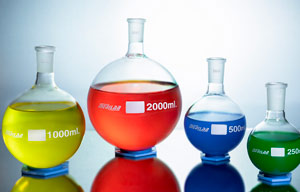1. Kode HS.
Menurut arahan Iran menerapkan 8digit kode Harmonized System (Kode HS) dimana Iran Customs Administration (IRICA) membuat 21 kategori untuk Kode HS yang digunakan di Iran. Produk tekstil termasuk pada bab berikut:
- Bab 50: Sutra
- Bab 51: Wol, bulu hewan halus atau kasar; benang bulu kuda dan kain tenun
- Bab 52: Kapas
- Bab 53: Serat tekstil nabati lainnya;benang kertas dan kain tenunan dari benang kertas
- Bab 54: Filamen buatan; strip dan sejenisnya dari
- Bab 55: Serat stapel buatan
- Bab 56: Gumpalan, kain kempa dan bukan tenunan; benang khusus; benang, tali, tali dan kabel dan barangnya
- Bab 57: Karpet dan penutup lantai tekstil lainnya
- Bab 58: Kain tenunan khusus; kain tekstil berumbai; renda; permadani; hiasan; border
- Bab 59: Kain tekstil yang diresapi, dilapisi, ditutupi atau dilaminasi; barang tekstil dari jenis yang cocok untuk keperluan industry
- Bab 60: Kain rajutan atau kaitan
- Bab 61: Barang pakaian jadi dan aksesori pakaian, rajutan atau kaitan
- Bab 62: Barang pakaian jadi dan aksesori pakaian, bukan rajutan atau kaitan
- Bab 63: Tekstil jadi lainnya artikel; set; pakaian bekas dan barang tekstil bekas; kain lap
Informasi selengkapnya dapat diakses disini atau di laman iranpartner.
2. Undang-Undang.
2.1 Undang-undang Peraturan Ekspor-Impor (Export-Import Regulations Act).
Undang-undang mengenai ekspor dan impor barang termasuk jasa pengiriman terkait eksportir dan importir. Barang yang dapat diekspor dan diimpor diklasifikasikan ke dalam tiga kategori berikut:
- Barang yang diizinkan: dengan memperhatikan kriteria yang relevan, ekspor atau impor barang tersebut tidak memerlukan lisensi.
- Barang bersyarat: ekspor atau impor barang-barang ini dimungkinkan dengan memperoleh lisensi
- Barang-barang terlarang: ekspor atau impor barang-barang ini (pembelian, penjualan atau konsumsi) dilarang di bawah syariat Islam dan atau oleh hukum.
Undang-undang ini antara lain mengatur:
- Importir, baik pemerintah maupun bukan, harus merujuk secara eksklusif ke Kementerian Perdagangan, untuk mendapat izin (lisensi) impor dan pendaftaran impor (pesanan).
- Semua produk impor tunduk pada pendaftaran pesanan dan perizinan impor dari Kementerian Perdagangan, dengan memperhatikan ketentuan lain yang relevan.
- Izin impor juga berlaku sebagai clearence dan tidak dipersyaratkan perizinan lainnya.
- Dalam kasus di mana standar produk wajib telah ditetapkan untuk impor dan diumumkan melalui Kementerian Perdagangan, serta dalam kasus standar lainnya, importir harus diminta untuk menegaskannya dalam kontrak pembelian dan kertas pendaftaran impor, dan untuk menginstruksikan pemasok untuk memastikan bahwa barang yang dikirim sesuai dengan standar yang ditentukan.
Informasi selengkapnya dapat dilihat disini.
2.2 Undang-undang Perlindungan Hak Pelanggan (Customer’s right protection law).
Undang-undang ini antara lain mengatur:
- kewajiban penyedia barang dan jasa di depan hak pelanggan,
- pembentukan dewan perlindungan
- cara mengelola dan menyelesaikan kasus
- denda dan hukuman
Informasi selengkapnya dapat dilihat disini.
3. Regulasi.
Importasi produk fashion
Instruksi “Instructions on Issuing Certificate of Activity for Representatives and the Branches of Foreign Companies and Suppliers of Apparel in Iran” dikeluarkan oleh Kementerian Perindustrian, Pertambangan, dan Perdagangan (MIMT) Iran pada tanggal 6 September 2016 yang bertujuan untuk mengatur impor pakaian jadi di Iran.
Dalam instruksi tersebut diatur bahwa merk asing yang ingin menjual produknya di Iran, harus mendapatkan Sertifikat dari Guilds and Merchants Center of Iran yang akan berlaku selama 2 tahun. Sertifikat tidak akan diterbitkan untuk individu dan hanya badan hukum berikut yang dapat mengajukan permohonan untuk sertifikasi:
- Perwakilan dari perusahaan asing (the “Representative”): Perwakilan (the “Representative”) adalah badan hukum Iran yang memiliki kontrak perwakilan dengan perusahaan asing atau diizinkan oleh perusahaan asing tersebut untuk bekerja sebagai perwakilannya di Iran.
- Cabang perusahaan asing di Iran (the “Branch”): Cabang (the “Branch”) adalah kantor perusahaan asing di Iran yang didirikan berdasarkan Undang-Undang tentang Izin Mendaftarkan Cabang atau Perwakilan Perusahaan Asing (Law on Permission to Register a Branch or Representative of Foreign Companies).
Menurut Pasal 3 Instruksi tersebut, Perwakilan atau Cabang diharuskan untuk memproduksi minimal 20% dari pakaian impor di dalam negeri Iran selama dua tahun pertama kegiatan mereka dan 50% dari produksi dalam negeri tersebut harus diekspor. Setidaknya, 5% setiap tahun harus ditambahkan ke bagian produksi dalam negeri dari tahun ketiga.
Instruksi tersebut memberikan tiga pilihan berbeda bagi Perwakilan atau Cabang untuk memproduksi produksi mereka di dalam negeri:
- Untuk mengatur jalur produksi di Iran secara mandiri;
- Untuk mengatur lini produksi dalam kemitraan dengan salah satu produsen dalam negeri; atau
- Untuk memesan melalui salah satu produsen dalam negeri.
Pada Pasal 17 Instruksi disebutkan bahwa impor pakaian hanya diperbolehkan setelah memperoleh izin yang sudah di sebutkan di atas. Instruksinya menyatakan bahwa "setiap impor pakaian ke negara untuk penggunaan komersial hanya diperbolehkan dengan menerima sertifikat kegiatan di bawah ketentuan instruksi ini. Jika tidak, maka dianggap penyelundupan dan akan dihukum sesuai dengan undang-undang".
Pemegang Sertifikat wajib menyediakan sistem sedemikian rupa sehingga seluruh proses dari impor hingga penjualan akhir dapat dilacak oleh otoritas terkait.
Informasi di atas juga dapat dilihat pada lama The legal points of import of apparel, cloths and textile to Iran dan An Overview of Fashion and Beauty Law.
4. Standar.
- ISIRI 10472 Glass textile – Mats made from chopped or continuous strips Description and basis - Properties
- ISIRI 1144 Description of woven fabrics
- ISIRI 11829 Textiles - Silk - Harvesting, transportation and storage of the cocoon - Application principles
- ISIRI 11830 Textile - Silk - By-products in silk yarn production - Classification
- ISIRI 11831 Textiles - Silk - Raw silk yarn storage - Application rules
- ISIRI 1234 Textiles - Knitted gloves - sizes
- ISIRI 1240 Feature for Hand Woven Wool Carpet
- ISIRI 1363 Textile- Bedspread and pillowcase - Features
- ISIRI 1398 Textiles ‐ Artificial fibers ‐ General names
- ISIRI 1425-1 Textile fabrics - Interlinings - Part 1: Fusible interlinings (woven and knitted) - specifications
- ISIRI 1425-2 Textile fabrics- Interlinings-Part 2: Weaving-sewing-interlinings-Test methods and - Properties
- ISIRI 160 Color fastness of textiles – gray scale for evaluating color change
- ISIRI 1703 Textile‐ Yarns spun on wool system-Tolerances
- ISIRI 1704 Textile- Produced organic- basic filament yarns- Tolerances
- ISIRI 1705 Textiles - Yarns spun in cotton or worsted systems - Tolerances
- ISIRI 1720 Silk Hand Made Carpets
- ISIRI 1949 Textile Flooring - Vocabulary
- ISIRI 2128 Flax Yarns for Textile Shoes - Properties
- ISIRI 2187 Textile- Worsted Fabrics (100% Wool) - Features
- ISIRI 2194 Textile fabrics - Cotton fabric jeans - Specification and test methods
- ISIRI 2262 Textiles - Pressed wool felts - Specification and test methods
- ISIRI 2263 Clothing textiles - Flammability - Test Method
- ISIRI 2264 Narrow elastic fabrics and tapes∙Properties and test methods
- ISIRI 2265 Combining rectangular textile floor dimensions
- ISIRI 2379 Textiles –Worsted Fabrics (55% Polyester – 45% Wool) –Specification
- ISIRI 2849 Textile fibers- Properties of woolen tops used in worsted system
- ISIRI 3071 Determination of the mass vocabulary of textiles
- ISIRI 317 Color fastness in textile materials
- ISIRİ 3318 Textile - Natural Fibers - General Names And Definitions
- ISIRI 3369 Tuff Textile Floor Series Features Kitchen Tufli Caspete With Cut Loop )
- ISIRI 3383 Textile fabrics- Viscose-polyester fabrics-Specification
- ISIRİ 3447 Textile-Tro Fiber Blenders-Quantitative Analysis
- ISIRI 3948 Textile‐ Viscose/polyester blended yarn‐ Properties
- ISIRI 4131 Textile tape measure
- ISIRI 4213 Combustion Behavior of Textile and Textile Products Glossary
- ISIRI 4219 Textile - Polypropylene staple fibers used in felt floor coverings -Properties
- ISIRI 4306 Textile – Color fastness – Wool adjacent fabric – Specification
- ISIRI 4310 Commercial Laundering Procedure Before Flammability Test for Textile Fabrics
- ISIRI 4312 Identification of fibers in textiles
- ISIRI 4495 Textile - Color fastness - Polyester adjoining fabric - Specification
- ISIRI 4496 Textile - Color fastness - Silk adjoining fabric - Specification
- ISIRI 4498 Textile Color fastness Adjacent Fabric: Multiform- Specification
- ISIRI 4528 Textile - Color fastness - Polyamide adjoining fabric - Specification
- ISIRI 4529 Textile - Color fastness - Adjacent to acrylic
- ISIRI 4534 Textile - Color fastness – Secondary acetate adjacent fabric – Specification
- ISIRI 4562 Textile Reinforced Plastic Hoses for General Purpose Water Applications- Specifications
- ISIRI 4793 Determination of flame propagation of textiles for curtains and drapes
- ISIRI 4821 Textile - color fastness test - compatibility of basic dyes for acrylic fibers
- ISIRI 4881 Textiles - Weavings - Definitions of general terms and basic textiles
- ISIRI 4882 Textiles - textured filament yarns - dictionary
- ISIRI 4883 textured yarns - Textile glass - basis for specification
- ISIRI 5156 Textile products Fiber content labeling
- ISIRI 5250 Textile - determining the mass vocabulary
- ISIRI 590 Textiles - Standard sizes for men's outerwear - Features
- ISIRI 591 Textile - Method of measuring the dimensions of men's sizes for outerwear
- ISIRI 606 Textile Cotton fiber Classification of Iranian cotton
- ISIRI 645 Textiles - Women's clothing sizes
- ISIRI 646 Textile - Specification for women's skirts
- ISIRI 877 Textile - Jajim (handmade) - Specification
- ISIRI 933 Textiles - Maintenance labeling code using symbols
- SECRET 1235 Textiles - lightweight cotton fabrics - Specifications
- ISIRI 10783 Textiles Quantitative analysis of animal fibers by microscopy Cashmere, wool, special fibers and their blends
- ISIRI 10797 Textile - Quantitative analysis of animal fibers by microscopy - Cashmere, wool, special fibers and their blends
- ISIRI 11261 Textiles Determination of twist direction in yarns and related products
- ISIRI 11262 Preparation of laboratory test specimens and test specimens for textile chemical tests
- ISIRI 10075 Color fastness to water stain on Textile Upholstery fabrics - Test method
- ISIRI 10076 Textiles Color fastness to washing with soap or soap and soda Test method
- ISIRI 10233 Textile - Determination of dimensional change in washing and drying
- ISIRI 10234 Textile - Non-woven - Determination of demand absorbency - Test method
- ISIRI 10235 Textiles – Evaluation of the Smoothness appearance of fabrics after cleaning – Test method
- ISIRI 10441 Textile Glass Roving - Production of test samples and determination of the tensile strength of impregnated rovings
- ISIRI 10471 Textile glass - Roving - Determination of dimensional resolution
- ISIRI 1049 Woven Textile Floor Covering
- ISIRI 10506 Textile –Evaluation of the appearance of wrinkles on fabrics after cleaning –Test method
- ISIRI 1057 Method ff Determining Fiber Quantities in Textile Materials
- ISIRI 10683 Textile Elastomeric yarns Determination of permanent deformation Test method
- ISIRI 10684 Textile Elastomeric yarns – Determination of elastic properties CRE type tensile tester Test method
- ISIRI 10685 Textile Elastomeric Yarns – Determination of tensile properties CRE type tensile tester Test method
- ISIRI 10686 Textile Elastomeric yarns – Determination of linear density short length samples Test method
- ISIRI 10724 Textile glass-reinforced plastics Determination of mechanical properties in rods made of roving-reinforced resin - Part 1: General evaluation and preparation of rods
- ISIRI 11070 Determination of antibacterial activity of textile-antibacterial finished products
- ISIRI 11118-1 Determination of Formaldehyde in Textiles - Part 1: Free and hydrolyzed formaldehyde - Water extraction method
- ISIRI 11118-2 Determination of Formaldehyde in Textiles - Part 2: Released formaldehyde - Steam absorption method
- ISIRI 11170 Textiles - Determination of resistance to specific pests
- ISIRI 11172 Textile - Determination of resistance to water penetration - Impact penetration test - Test method
- ISIRI 11178 Textile – Oil repellency – Hydrocarbon resistance – Test method
- ISIRI 11179 Textiles Physiological effects Measurement of thermal and water vapor resistance under steady-state conditions Sweatproof hotplate test
- ISIRI 11180 Textile fabrics – Evaluation of crease recovery of fabrics – Appearance method
- ISIRI 11181-1 Textiles – Determination of thermal resistance –‐ Part 1:Low thermal resistance
- ISIRI 11263-1 Textiles – Determination of helixity after washing –‐ Part 1: Percentage of helix change in knitted garments
- ISIRI 11263-2 Textiles - Determination of spirality after washing - Part 2 : Woven and knitted fabrics
- ISIRI 11263-3 Textiles – Determination of spirality after washing – – Part 3: Woven and knitted garments
- ISIRI 1140 Test Method for resistance of textiles to common clothing moth
- ISIRI 1141 Machine-made textile floor coverings-Determination of dimensional changes due to the effects of different water and heat conditions-Test method
- ISIRI 1142 Test Method for Dimensional Stability of Textile Floorings Determination of Expansion under Mechanical Impact
- ISIRİ 1143 Determination of Tuft Led Length on the Toft Floor of Hand Woven Carpet
- ISIRI 1145 Textiles-Determination of cuprammonium fluidity of cotton and some cellulosic artificial fibers-Test method
- ISIRI 1146 Determination of cuprammonium fluidity of textile-linen materials-Test method
- ISIRI 1147-1 Textiles - woolen fabrics - determination of breaking strength and elongation (strip method)
- ISIRI 1147-2 Textiles - woven fabrics - determination of tensile strength - retention method
- ISIRI 1149 Textile - binary fiber blend - quantitative chemical analysis
- ISIRI 1155 Determination of dimensional changes of textiles caused by wet cloth and metal places and decoration effect
- ISIRI 1156 Determination of dimensional changes of textiles caused by the alternating effect of humid and dry air
- ISIRI 1236 Textile - In cellulosic or synthetic fibres, yarns and fabrics or Determination of certain water-soluble additives in yarns and fabrics made from blends of these fibers -Test method
- ISIRI 1242 Textile - Determination of dimensional changes of fabrics by immersion in cold water
- ISIRI 1243 Determining the Thickness of Textile Materials
- ISIRI 1244 Textile fabrics - Determination of recovery from wrinkling of a horizontally folded sample -Test method
- ISIRI 1245 Textile fabrics - Determination of air permeability - Test method
- ISIRI 1246 Determination of shrinkage washes of woven rayon and synthetic fiber fabrics
- ISIRI 1247 Textile - Method of preparing test samples from fabric samples for chemical tests
- ISIRI 1248 Textile - Method of preparing test samples from fabric samples for physical tests
- ISIRI 1361 Test method for dimensional changes in woven or knitted textiles (except wool)
- ISIRİ 1399 Determination of Water Approach of Textile Fabrics
- ISIRI 1432 Textiles Color fastness to milling: Alkali milling Test method
- ISIRI 1452 Curl Detection in Textile Fabrics
- ISIRI 1456 Textile fabrics - Measurement of equivalent pore size of fabrics (bubble pressure test) - Test method
- ISIRI 1458 Textile Wool Fibers Determination of the percentage of medulla fibers by projection microscope
- ISIRI 1459 Textile - Cotton fiber - Lint-free content - Test method
- ISIRI 1465 Textile‐ Cotton knitwear - Specifications and test methods
- ISIRI 1506 Textiles - Color fastness test - color fastness to mercerization
- ISIRI 1508 Color fastness to textiles – determination of fastness to carbonization
- ISIRI 1509 Color fastness of textiles - determination of fastness to organic solvents
- ISIRI 1511-1 Textiles - Color fastness tests to bleaching: Hypochlorite
- ISIRI 1511-2 Textiles - Color fastness tests to bleaching: Peroxide
- ISIRI 1513 Determination of color fastness of textiles to pottery
- ISIRI 1521-1 Textiles- Determination of abrasion resistance of fabrics by Martindale method Part 1: Martindale abrasion test apparatus
- ISIRI 1521-2 Determination of abrasion resistance of fabrics by the Textiles-Martindale method Part 2: Determination of sample deterioration
- ISIRI 1521-3 Determination of abrasion resistance of fabrics by Textile-Martindale method Part 3: Determination of mass loss
- ISIRI 1521-4 Textiles- Determination of abrasion resistance of fabrics by Martindale method Part 4: Evaluation of appearance change
- ISIRI 1534 Textiles - Color fastness to bleaching:Sodium chloride (severe)- Test method
- ISIRI 1537 Textile‐ - Color fastness to cross dyeing: wool-Test method
- ISIRI 1572 Textile - columnar fibers - Evaluation of maturation - microscopic method
- ISIRI 1577 Features of Metal Cans For Beer
- ISIRI 1578 Textiles - Color fastness to steaming -Test method
- ISIRI 1581 Textiles - Color Fastness Test Part E03Color Fastness to Chlorinated Water(Swimming - pool water)
- ISIRI 1582 Specification for ties made of filament polyester yarns
- ISIRI 1583 Determination of barium activity number of cotton textile materials
- ISIRI 1602 Textile - Woven fabrics - Determination of warp and weft mass per unit area in fabric - Test method
- ISIRI 1665 Textile - Classification of cotton yarns in terms of appearance - Test method
- ISIRI 1668 Textiles - Color fastness to rubbing: Organic solvents - Test method
- ISIRI 1716 Testing of textiles – determination of fiber length of cotton according to the card staple method
- ISIRI 1721 Textiles - Knitted Fabrics - Test Methods for Determining the Number of Strips and Rows -
- ISIRI 1722 Textiles - Knitted and Woven Fabrics - Width and Length Determination Test method
- ISIRI 1738 Test for pile resistance and other related surface changes of textile fabrics
- ISIRI 175 General Experiment Principles on Color Fastness of Textiles
- ISIRI 187 Color fastness test of textiles Determination of color fastness to dry cleaning
- ISIRI 1895 Textile - Natural dyes - Cochineal - types and dyeing methods
- ISIRI 1896 Textiles - Natural dyes - Source - types and dyeing methods
- ISIRI 1897 Textiles - Natural dyes - Madder - types and dyeing methods
- ISIRI 1898 Textiles – Natural dyes – Black oak – types and dyeing methods
- ISIRI 1938 Textile Wool Fibers Determination of vegetable matter and other alkali insoluble impurities in washed wool
- ISIRI 1940 Textiles Wool fibers Determination of tensile strength and breaking strength of fiber bundles 25,4 mm gauge length
- ISIRI 1948 Textile Floor Coverings-Determination of Pile Mass per Unit Area that can be Cut from the Foundation
- ISIRI 1950 Textiles Color fastness to hot air vulcanization Test method
- ISIRI 1951 Determination of Textile Aqueous Extract PH
- ISIRI 1952 Determination of color fastness of textile material to mechanical washing
- ISIRI 204 Textile- Color fastness to friction -Test method
- ISIRI 205 Color fastness of textiles – determination of daylight fastness
- ISIRI 2112 Textile Tests, Determination of the Content of Evolution
- ISIRI 2390 Test method of shrinkage of textile yarns
- ISIRI 248 Textile - Color fastness test - Color fastness to seashell
- ISIRI 249 Textiles - Color fastness of wool to acid chlorination: Sodium dichloroisocyanurate
- ISIRI 250 Textiles - Color fastness testsColor fastness to hot pressing
- ISIRI 2741 Textiles -Fiber and Yarn -Polyamide 6 and 6,6 BCF Yarn for floor coverings - Specifications and test methods
- ISIRI 2794 Textile -‐ Synthetic fibers -‐ Determination of breaking strength and elongation of single fibers
- ISIRI 28 Textile- Yarn from Packages - Determination of linear density (mass per unit length)
- ISIRI 2883 Textile - Industrial sewing threads made entirely or partially from synthetic fibers - Test methods and - Properties
- ISIRI 2960 Shrinkage of Textile Fibers (Bundle Test) Test method
- ISIRI 2961 Method for determining pile loss in cut pile and single loop pile fabrics
- ISIRI 2962 Textiles - Determination of crimping frequency of manufactured staple fibers - Test method
- ISIRI 2963 Textile fabrics - Evaluation of visible contamination of upholstery fabrics by body contact - Test method
- ISIRI 3061 Textile- Absorbent woven gauze- Specifications and test methods
- ISIRI 3182 Textiles - Color fastness to decaturation –Test method
- ISIRI 3184 Textile floor coverings Polypropylene carpet backing fabric - Specifications and test methods
- ISIRI 333 Color fastness tests of textiles
- ISIRI 3362 Textiles - Bi-fibre blends - Quantitative chemical analysis
- ISIRI 3458 Estimating Method of Residential Chlorine in Cotton Textile Materials
- ISIRI 3509 Textile floor covering – Ignition properties of finished textile floor covering materials – Test method
- ISIRI 3638 Textile Cotton fiber - Determination of Neps number - Test method
- ISIRI 3721 Textile - Color fastness - Instrumental assessment of relative whiteness - Test method
- ISIRI 3722 Identification of textile fibers (microscopy method)
- ISIRI 3781 Textile - Color fastness of textile floor coverings to shampooing - Test method
- ISIRI 4067 Test method for the determination of resin flow textile glass fiber pre-impregnations
- ISIRI 4068 Volatile matter – test method for determining the content of textile glass fiber pre-impregnations
- ISIRI 4069 Test method for determination of resin and fiber content and fiber mass per unit area textile Glass fiber pre-impregnations
- ISIRI 4314 Textile fabrics - Combustion behavior - Determination of flammability of vertically oriented samples - Test method
- ISIRI 4535 Textile fabrics - Combustion behavior - Measurement of flame propagation properties of vertically oriented samples - Test method
- ISIRI 4780 Textile –Different dyeing behavior of cotton –Test method
- ISIRI 4803 Determination of Absorption of Textile Nonwovens - Test method
- ISIRI 4840 Textile‐ Color fastness to pleats: Steam pleating - Test method
- ISIRI 5100 Textiles - color fastness tests Color fastness to dry temperature (excluding pressing)
- ISIRI 5549 Textiles - Test for instrumental determination of color fastness of 1/1 standard color depth
- ISIRI 583 Textile- Woven bandage- Specifications and test methods
- ISIRI 683 Textiles - woven fabrics - ConstructionAnalysis methods Part 2: Determination of the number of threads per unit length
- ISIRI 765 Rubber, vulcanized - Determination of adhesion to textile fabrics
- ISIRI 885 Machine-made textile flooring - Selection and cutting of samples for physical testing
- ISIRİ 886 Textile Floorings Culture Determination per Unit Area
- ISIRI 887 Textile floor covering determination of total pile yarn mass per Umit Region
- ISIRI 888 Textile Flooring Determination of Tuft and/or Lops per Unit Length and Per Unit Area
- ISIRI 889 Thickness determination of machine-made textile floor coverings
- ISIRI 890 Textile Flooring – Dynamic Determination of Loss of Thickness under Loading-Test Method
- ISIRI 891 Textile - Method for determining the seam spills of upholstery woven fabrics
- ISIRI 892 Textiles - Upholstery woven and knitted fabrics - Specifications and test methods
- ISIRI 895 Textile Floorings - Ldss Determination Of Thickness After Short, Medium Static Loading - Determination of Loss of Thickness after Long Heavy Static Loading
- ISIRI 927 Textile False twist textured polyester yarns - Specifications and test methods
- ISIRI 928 Specifications for Polyamide Filament Stretch Yarns
- ISIRI 929 Textiles - Warp and weft knitted fabrics from continuous filament polyamides and stretch yarns - properties
- ISIRI 948 Textiles Standard atmospheres for conditioning and testing
5. Lembaga Berwenang.
Ministry of Industry, Mines and Trade
Iran National Standards Organization (INSO)
6. Informasi Lainnya.
- Doing business in Iran: trade and export guide
- Advantages and Disadvantages of Clothing Production in Iran











